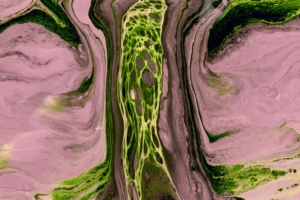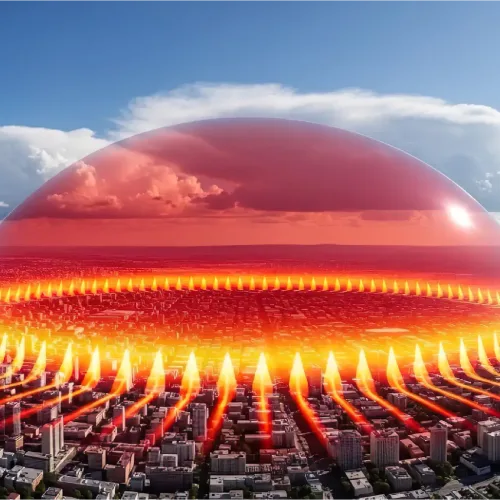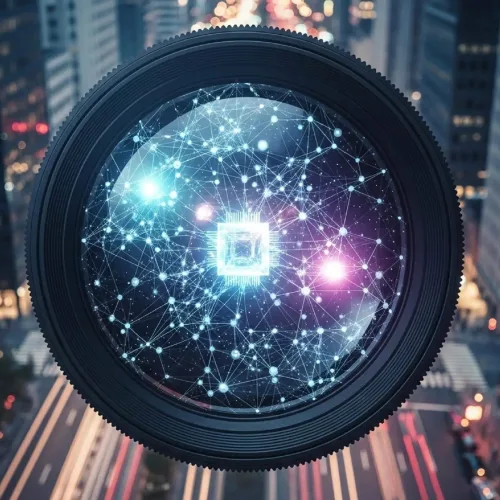Geoscience research is not an exception: generative AI is changing the landscape. Scientists who study the earth use complicated information to examine how our planet works. AI can help in to make more sense of this information. As AI becoming more common, we are seeing new ways to get better at studying the systems of our planet.
Geology researchers run into a lot of problems, from gathering tons of data to making sense of it all. AI can lend a big hand here. It can make fake data, copy how the earth works, and figure out tricky info on its own. As AI gets smarter, it will do more and more in earth science.
What is Generative AI?
Artificial intelligence, defined by its capability to make something new, from something observed. It differs from traditional AI, which analyzes existing data. Rather, generative AI makes new images, text, simulations, and other content. It picks up patterns from big datasets and uses these patterns to make something brand new.
You will often see GPT (for text creation) and DALL-E (for image making) as examples of generative AI models. These models use deep learning to analyze relationships in data and produce lifelike results. More and more fields, including geology, are using generative AI to tackle problems that used to be tough or slow to solve.
Generative AI in Geoscience Research

A lot of the data comes into geology, and artificial intelligence can help with solving all these issues. Understanding this in more complex earth systems is made easier by generative AI models. These models can take data and provide meaningful analyses, better still, they can produce believable simulations. There are many applications of artificial intelligence for geological research, ranging from generating synthetic data to estimating future events.
Simulated earthquakes, volcanoes, and the weather can be overcome using creative artificial intelligence. It can help scientists to work out where data is missing, fill in the gaps, and provide a clearer picture. It helps with better disaster preparedness and resource management decisions.
Applications in Geoscience
Data Augmentation and Simulation
It is hard to generate new data in geology. Generative AI helps by generating realistic synthetic data to fill in between what is available in real world data. It can help the accuracy of machine learning models. Second, it allows geologists to run simulations. They can look at things that are too slow or too expensive to look at directly.
Image Analysis and Interpretation
One way that AI is also used is to analyze satellite and aerial images. If we can improve low resolution images via generative AI, scientists have a better view to look at geological features. All by itself, it can find fault lines, mineral deposits, and other important surface features of the Earth. It also helps to speed up research by automating image analysis.
Predictive Modeling

Landslides, tsunamis, and earthquakes are being predicted by AI. These predictions give scientists advance notice of future events in order to limit damage. This means generative AI models receive many input variables, which then allows for more accurate predictions.
Case Studies in Geoscience AI Applications
Real world geology projects using generative AI in geoscience have been a great success. One example of this is using AI to predict and simulate earthquake events to make the world better prepared and better respond. By predicting such events, earlier warnings will contribute to the reduction of loss of life and property.
And in the fields of resource exploration, too, AI is making a ruckus. AI is helping companies analyze huge mines of geological information to discover valuable reserves of minerals, oil, or gas. The method herein is faster and more efficient compared to traditional techniques. But it also allows companies to save time and reduce costs in locating resources.
Tools for Geoscience Research
Geologists could make use of many AI tools. The tools included here include software for data analysis, as well as platforms for running simulations. Scientists are freeing up time to process large datasets by using AI tools to do so quickly and accurately.
Machine learning platforms like TensorFlow and PyTorch, as well as making the AI models for geoscience tasks, are popular. To that end, other tools such as ArcGIS are giving AI a hand in the analysis of geospatial datasets. They are also great platforms that can make research go faster and get better results.
Challenges and Limitations
Generative AI has possibilities and limitations. One issue is the accuracy of the generated data. If you aim to train an AI model, you need data. If the training data has very little or no data, then the results will be inaccurate.
Second, they require aggressive computing power. Although it is running complex AI models, it can be expensive, and the strategy is to use powerful hardware. The problem is that there are ethical concerns surrounding AI in research. Specifically, data privacy and such are especially troubling.
Ethical Concerns in AI Research
It is well known that there are ethical challenges to using AI in geoscience. Existing data for AI model training is based on biases. They can cause you to make incorrect predictions or wrong conclusions.
Moreover, it has concerns regarding privacy if your data is sensitive. When using AI for researching, researchers have to make sure any of the personal or confidential information remains protected.
The Future of AI in Geoscience
Yet, AI is growing and getting better. The new technology will aid geologists in new ways as the technology progresses. Indeed, one of the Earth processes can more directly be predicted using AI. Real time data analysis during natural disasters can also be helped by AI.
AI can be used by geologists for constantly monitoring environmental changes. Through it, you can also track issues like climate change, land use change, and pollution. It holds promise for the future of AI in geology, as well as for new tools to better research and make decisions.
Getting Started with AI in Geoscience

There is a lot out there for people new to AI in geology. First, you can begin with the machine learning and AI models basics. Geology is but one of many online courses that teach how to apply AI to real world problems.
In fact, there are open source AI tools and software you can practice with. Anyone in geology can use AI to shorten research time and improve accuracy with training in place and proper tools.
The Growing Role of Generative AI in Geoscience
The applications of AI technology in geology can only follow the pace of its progress. As new AI models get more accurate, geologists will not only have better models to make their predictions with, but will also discover increasingly more things about the world around them. By helping future Earth systems monitor real time, we would have immediate reaction capabilities to the events it experiences.
As AI rises, geologists will be able to work more efficiently. It will be good at solving environmental issues. Additionally, it will predict natural disasters. Finally, as AI continues to evolve, AI will become an even more important tool for geology research.




